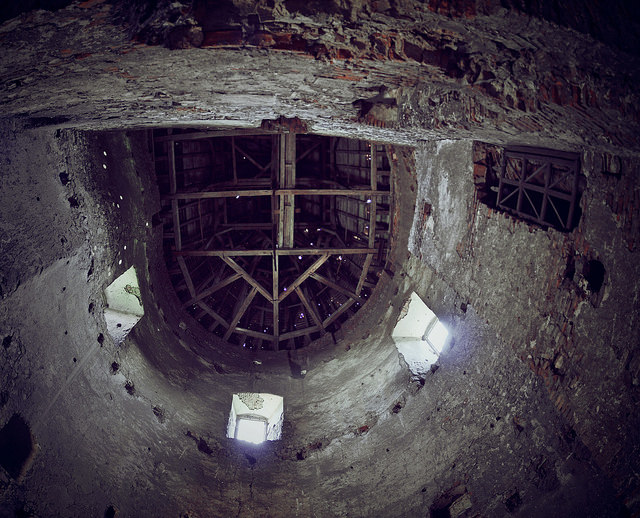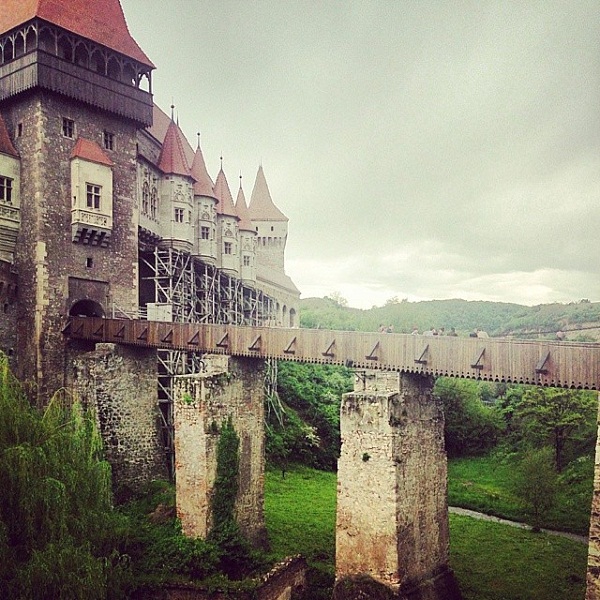The most significant historical monument in South Transylvania, the Castle of Hunedoara is literally sieged by enthusiasts of dark legends from all over the world. The Corvin Castle, as it is also called, is known worldwide in relation with Vlad Tepes horror stories, about whom Western tourists often think that he was imprisoned in the dungeon of the medieval castle for seven years. Although historians have refuted this legend, the bloodthirsty Dracula myth continues to attract an army of visitors to the castle.

“People are asking questions about Vlad Tepes a.k.a. Dracula, and we tell them that his story is indeed related to the history of this edifice. However, the most important past inhabitants of the castle were John Hunyadi and his son Matthias Corvinus, who used to reign in this castle.” – says Dan Bera, the administrator of the castle.
The place where prisoners were tortured
In the castle, all 40 rooms evoke ancient legends, presented at least as chillingly and spectacularly as the horror stories about the Romanian ruler Vlad Tepes‘ dreadful deeds – right at the entrance, two dark rooms make visitors shiver when they are told that these were the rooms in which prisoners were tortured.
“This room and the tower were built in the 15th Century, and according to information by contemporary historians they used to be sites of torture. The executioner not only dealt with beheading, but he also tortured the prisoners who were brought here. “Sometimes they were skinned alive “- says historian Ioan Bodochi.
One story says this is the place where John Torok, a Hungarian nobleman had his wife, Anna, beheaded, because she had gotten in a relationship with a young man from Transylvania during his absence – before the execution a nail was driven into her head. The two torture rooms today host an exhibition of the instruments that were used during tortures.

The prison for those who were sentenced to death
Further down in this palace of fear, an old door leads to the dungeon.
“A deep pit was dug between the new gatehouse and the castle – a 4-5 meter deep pit, which is likely to have been used for those sentenced to death to be pushed into. This is evidenced by the executioner’s coat of arms, carved into one of the stones.” – says historian Ioan Bodochi. The knights’ hall, situated beside the old prison, has a tunnel that leads to the dungeon, which was also used as a prison.
“According to a legend, the knights’ hall, in addition to having been used as a guest reception hall, also served as a conference hall. The person sentenced to death was sat in a chair right above the hole leading to the dungeon, and when the decision was made, the prisoner fell several meters into the dungeon.”
Tourists are not permitted to visit the dungeon, but they have access to the old jail, which was renovated in recent years. The jail was last used in 1785, after the uprising of peasants lead by Horea, Closca and Crisan.
The horror continues with the den of lions, where allegedly the prisoners were thrown to serve as food for the beasts. At this place, there is a scaffold reminiscent of burnings at the stake, and a gallows. Several other rooms still serve as reminders of legends about the cruelty of Elizabeth Szilagyi, John Hunyadi’s wife, who ordered the execution of the three Turkish prisoners who had dug the well in the courtyard of the castle – a work that took 15 years to complete.

Filming location
“Due to its unique architecture, its significance and its history, only in the recent years the castle served as the filming location for at least 10 documentaries dedicated to lovers of mysteries” – Dan Bera says.
The construction of the Castle of Hunedoara began in 1440, when John Hunyadi decided to turn the fortress inherited from his father into an imposing knight’s castle, making it into an indestructible fortress. In subsequent years, limestone walls were erected all around the edifice.
Although, according to historians, John Hunyadi only lived in the castle for a very short time, “the great defeater of the Turks”, who spent almost his entire life in campaigns, wanted to transform the edifice into a building that would reflect his personality – that is, to turn it into an impenetrable fortress.
Throughout history, many alterations were carried out in the structure of the castle. In 1854 it was practically destroyed after a fire caused by lightning – only the five hundred year old door leading to the prison was left undamaged. After the fire, the castle stood abandoned for decades until the renovation work began. Currently, under the Hunedoara town hall’s management, the castle has become one of Romania’s most visited and best known historical attractions.
